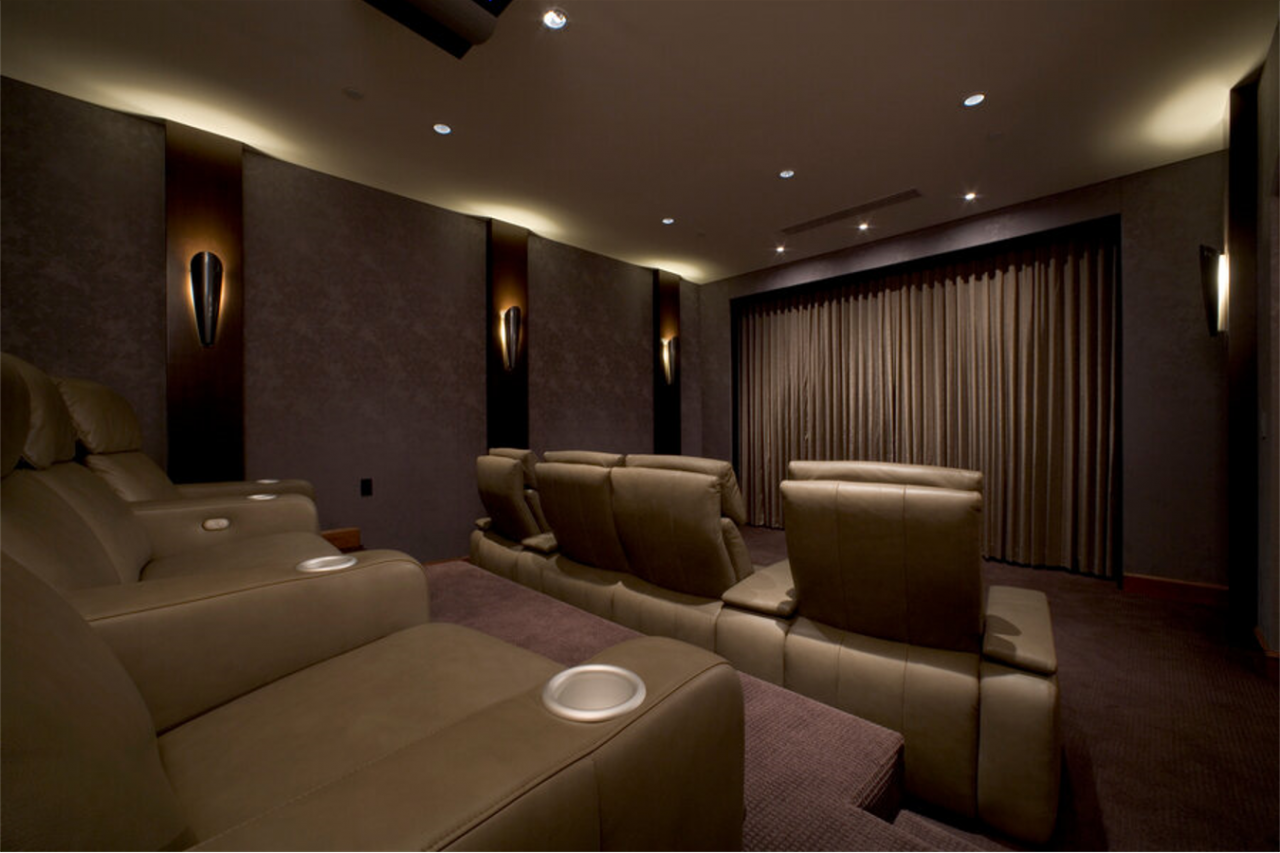Acoustic Panel Placement
The first element in acoustic treatment is taming reflections. The goal is to subdue reflections, absorbing just enough reverberation so that the sound is natural and presents precisely what the artist and sound engineer intended. Acoustic panels come in different noise reduction ratings, called NRC (Noise Reduction Coefficient). A panel with an NRC rating of .50 means that it absorbs 50% of the sound waves that hit it and reflects the other 50% back into the room.
Acoustic panels should be used at the reflection points of your speakers. For front stage speakers, depending on how they’re aimed, these points could be on parts of the back and side walls. In non-rectangular rooms, other walls may be reflection points, too. Some reflectivity will depend on the types of speakers in your theater, as some are more directional than others.
With a full Dolby Atmos surround system, you have many sets of speakers that are reflecting sound. However, acoustic panels and other treatments are just one part of the sound equation. The seating, flooring, wall coverings, and other furnishings also serve to absorb sound. A professional home theater designer (like Show & Tell AV) understands how furnishings, décor, speakers, and material choices will affect the sound and can recommend the right acoustic treatment strategy for the space.
While there’s no one way to treat a room – each will be different – you can count on some general principles. Side walls in a surround setup will see the most sound reflectivity, so panels with higher NRC ratings may be used for them. Alternatively, décor such as curtains or other soft wall coverings can serve as part of the treatment. In back walls, diffuser panels help disperse sound waves as opposed to deadening them. You want your movie soundtracks and music to be dynamic, so you don’t want too much muffling that takes away the liveliness.
Additionally, front walls can usually benefit from acoustic treatment on either side of the screen. If you have an acoustically transparent screen with front stage speakers behind it, panels on the front wall can also help with those reflection points from the rear, side surround, and potentially ceiling speakers.


